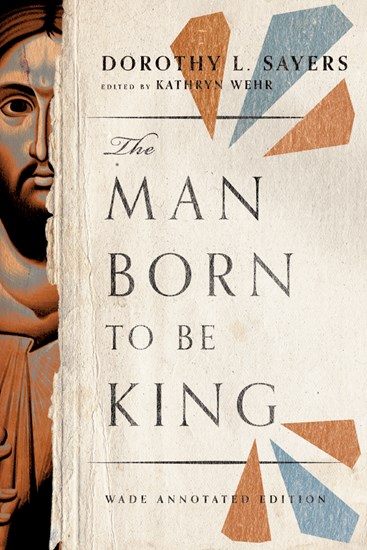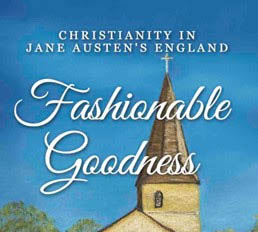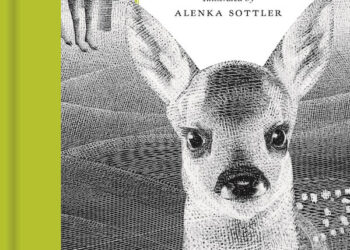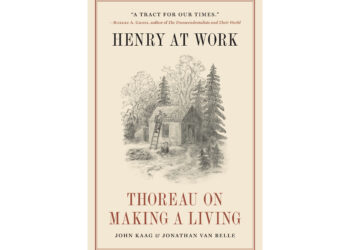A well-handled annotated edition can enhance the reading experience of a classic text for any reader. A brief scan of currently available titles suggest that the style and depth of the annotations provided to the reader run the gamut – from offering the definition of an unfamiliar word to an extended comment on alternate versions of text discarded by the author. Even in a relatively short work, marginal notes can run into the hundreds while coffee-table editions may include an equally impressive number of illustrations. As examples, The Annotated Mrs. Dalloway (Liveright, an imprint of W.W. Norton, 2021) includes maps of the route followed by Woolf’s 1924 protagonist as well as contemporary photographs of London and period artwork, while The Man Born to be King: Wade Annotated Edition (IVP Academic, 2023) offers a more stripped-down, tightly focused treatment of Dorothy L. Sayers’ creative process in a BBC-commissioned cycle of radio plays.
A Bit of Historical Background
An annotated edition is a signal to the reading public of a work having reached the status of a literary “classic”, but one which may require clarification or additional context in order to be fully appreciated. From the perspective of those developing such an edition, the question is how best to unobtrusively provide useful guidance through the cultural complexities of another era?
Historically, there has been disagreement over the value provided by annotated editions, most particularly in the classroom. In a November 1921 issue of The English Journal. Julian W. Abernethy commented negatively in an essay, The Annotated English Classic, that publishers were saturating the market with limited value editions, exploiting a market of over-burdened, possibly ill-prepared instructors who were a little too quick to resort to their use without an eye to academic qualification or credentials. Cynically, he wrote:
If some enterprising publisher were to induce ex-president Taft to edit Milton’s Minor Poems, he would undoubtedly have a “best seller,” whatever might be the opinions of the best teachers.
Abernethy advised against the use of such “push-button” instructional aids, preferring that students be allowed to encounter content immersively on their own, unimpeded by tedious explanation and detail.
Of course, over time, demands in the marketplace change. In 1960, freelance writer and editor Martin Gardner persuaded Clarkson Potter to publish The Annotated Alice, not as something intended for students in a classroom but rather for the adult and independent reader. As explained in a recent presentation given by scholar Dana Richards of George Mason University, Gardner had his own vision of what an annotated edition should be. He wasn’t overly interested in contributing original findings, but rather in assembling material from the published research of others. His best-selling Annotated Alice was followed by an annotated version of Lewis Carroll’s The Hunting of the Snark. There is one drawback to Gardner’s approach and it dovetails somewhat with Abernethy’s concern. There are instances where an annotation is provided and allowed more space than its relevance to the work is justified. In Gardner’s 1987 work, The Annotated Innocence of Father Brown, space equivalent to a full page is given over to an historical explanation of the advertising origin of the phrase “Sunny Jim”. Gardner included the annotation for its quirkiness. However, G.K. Chesterton only uses the nickname once, applying it to a passing, secondary character in the short story; the reader’s enjoyment of the story won’t actually be enhanced by providing a detailed background. Depending upon the publisher’s resources, inclusion of the information might be viewed either as value-add or as “padding”.
Throughout subsequent decades, annotated editions for the adult reader have proven popular. Harvard University Press has published annotated editions of all of Jane Austen’s six novels as fabulous coffee-table sized volumes with significant effort provided by editorial and production teams. W.W. Norton has published a variety of annotated editions with introductions by such-well known scholars as Maria Tatar, Henry L. Gates, and Michael Patrick Hearn. As scholars increasingly contribute to these trade editions, the output is subsequently noted by other scholars in scholarly reviews.
 Developing the Annotated Edition
Developing the Annotated Edition
I previously mentioned both The Annotated Mrs. Dalloway and The Man Born to Be King: Wade Annotated Edition; both titles represent works of scholarship. The Annotated Mrs Dalloway received positive critical notice from the Wall Street Journal, the Los Angeles Review of Books, and The Modernist; attention paid to the release of The Man Born to Be King was less, with reviews appearing in the journals, Ethics and Culture and Veritas, as well as Library Journal. As much as I might enjoy casually flipping through the amply-illustrated Norton Annotated Mrs. Dalloway, for the purposes of this post, I will focus on the scholarship found in the IVP Academic offering. For those of a TL;DR mindset, in my view, the latter title provides a significant amount of value, reflecting close attention ensuring the work is fit for purpose.
Dr. Kathryn (Katie) Wehr, is the editor of the Wade Annotated edition, currently affiliated with the University of St. Thomas in St. Paul, Minnesota. She is herself a scholarly publishing professional, serving as a managing editor of Logos, a journal emerging from their Center of Catholic Studies. The Marion E, Wade Center at Wheaton College includes in its well-known collection of Inklings correspondence extensive holdings of Dorothy L. Sayers’ manuscripts and correspondence. Sayers is most popularly known for her detective fiction and for her translation work on Dante; however, as documented in Catherine Kenney’s The Remarkable Case of Dorothy L. Sayers (Kent State University Press, 1991) her radio cycle of plays on the Life of Christ was a ground-breaking production in 1941-42. The commission came from the Director of Religious Broadcasting at the BBC, J.W. Welch, who despite the controversy at the time felt it to be the most important event in religious broadcasting that the BBC had ever undertaken. Then Archbishop of Canterbury [William] Temple called it simply “one of the greatest contributions to the religious life of our time”.
Wehr, noting the lack of scholarly attention to Sayers’ dramatic works, applied for and was awarded a grant from the Wade Center to correct the omission. The scope of her work was clearly stated in the book’s general introduction: “Annotating the plays with references and footnotes shows how she [Sayers] went about researching and writing them, how she used the four Gospels, what her sources said about the same material, and how she explored and emphasized key theological themes.”
The IVP Academic press kit for the publication drew particular attention to Wehr’s unique contribution of an index to the specific scriptural sources Sayers used to develop the radio plays. The same press kit included a statement indicative of Wehr’s objective in creating the work: Distilling my published scholarly articles about the plays and Sayers’ theology into introductions that are accessible enough for fans of Sayers but also meaty and referenced enough for future Sayers scholars. The publication was to be informative and educational rather than to provide entertainment.
The same practicality is seen in the two formats released in January of 2023. There are no extraneous illustrations or other padding. The physical output is traditionally formatted – a 464-page paperback in a 6” x 9” trim size. On specific pages containing Sayers’ scripts, the space allocated for the actors’ dialogue was 7-½” by 3-⅜” with marginal notes shown in side page panels measuring precisely one inch in width and 7-½ inches in length. Very brief Scripture references appear at the foot of the page, where users might expect to locate traditional footnotes. For one academic with whom I discussed use of annotated editions, this was the ideal arrangement of the page elements, everything immediately visible to the eye and in context.
If following an audio performance of the plays (such as the 1967 productions hosted on YouTube), another reader might prefer to use the digital edition. On the Kindle Fire tablet, one could manage to have a purely immersive reading of the individual scripts, as reader action was needed to see anything beyond the primary text.. Marginal notes are indicated by a light blue double line beneath a word or phrase; tapping on the link navigates the user to the notes appended to the end of that particular play’s script. The aforementioned Scripture references are treated as footnotes in the Kindle interface with a tap by the reader needed to bring up the specific chapter and verse.
Device screen size can become an issue. In an older (7th generation) Paperwhite, where the screen size is only 3-½” x 4-⅞”, the footnote window takes up a full third of the screen when enabled. In a first-generation Kindle Scribe device (6-½” x 8-3/16”), the same pop-up window absorbs only 20% of the screen. The lack of flexibility in positioning the page in the Paperwhite means that looking at the specific Scripture reference itself may obscure the original context of the numbered reference.
There was purposeful use of page numbering. While in the older Paperwhite, the reader is only able to see Amazon’s location numbers, which shift depending upon the font and layout selected by the reader, the more recent Kindle Scribe device displayed actual page numbers that reflected the static page number of the paperback. Thus, the digital edition could be as readily used for assigned reading in an instructional setting.
Using the Kindle app on a mobile phone is best characterized perhaps as being serviceable, but no more. Checking a marginal annotation and then trying to navigate back to the original text page is annoyingly clunky.
The Takeaway
Why should this post go into such detail over what some might consider to be a relatively minor piece of scholarship? In part, because any book’s format (particularly one targeted to the academic sector) should meet the requirements of a real world use case. This annotated edition was created, not to impress the reader, but to support the anticipated educational work of reading and analysis. It’s also worth reminding ourselves that scholarly output doesn’t have to be flashy to serve its function.
I love the coffee-table approach to annotated editions found in the trade publishing sector. (I own many from both Harvard University Press as well as W.W. Norton.) Those have the space to allow a single detailed annotation to run across three printed pages. The artwork causes one to linger. That said, a physical book’s format needs to be fit for purpose if hard copy publications are to be sustainable. Small or mid-sized publishers serving the academic marketplace (such as IVP Academic) are thoughtfully strategic in their production planning. The final product is worth the effort.
Discussion
4 Thoughts on "The Serious Reader: Scholarship and Annotated Editions"
I’m a little disappointed that this article fails to mention any of my annotated editions, seven volumes for W. W. Norton (Sherlock Holmes, Dracula, Frankenstein, and Lovecraft), as well as Annotated Sandman (4 vols.), Watchmen Annotated (both titles from DC Entertainment), Annotated American Gods (Dutton), Classic American Crime Fiction of the 1920s (Pegasus Books), and most recently, Strange Case of Dr. Jekyll and Mr. Hyde (Mysterious Books). These have not only been very well received critically (thank you!), they have sold well to the general public. I’ve always said that these are great works of art that don’t need my help. My aim, however, has been to enhance the readers’ experience and, in many cases, to explore the evolution of these important books and the writer’s craft. Are my books important works of scholarship? I make no such claim. Are they a gateway to essential scholarship? I hope so.
Please forgive what was an unintentional oversight. When your comment showed up in my email this morning, I immediately recognized your name in this context. I admit I wasn’t aware that you’d done an annotated edition of Neil Gaiman’s American Gods and now I do want to get hold of that particular work. That must have been a fascinating book to work on.
American Gods was another opportunity to explore the evolution of a text, from original handwritten manuscript to published text to “expanded” published text. I also had the benefit of Gaiman reading and commenting on my draft notes, correcting some, expanding others, and suggesting additional notes. The same was true for Sandman and Watchmen (the latter with Dave Gibbons). It’s a very different experience working with living authors!
Also worth mentioning the “critical editions” of works such as medieval chronicles and their translations. These are full of notes, some more useful than others. Different hen, same barnyard.



